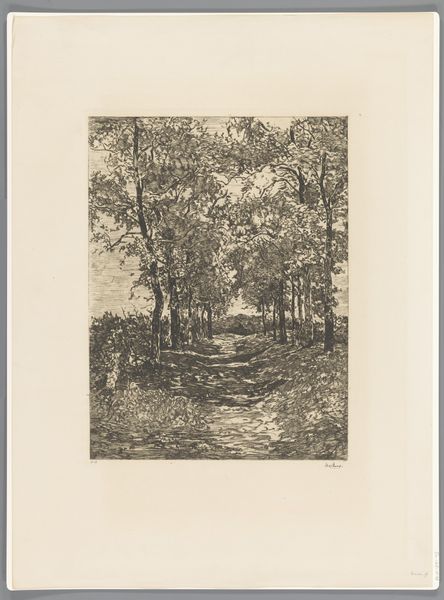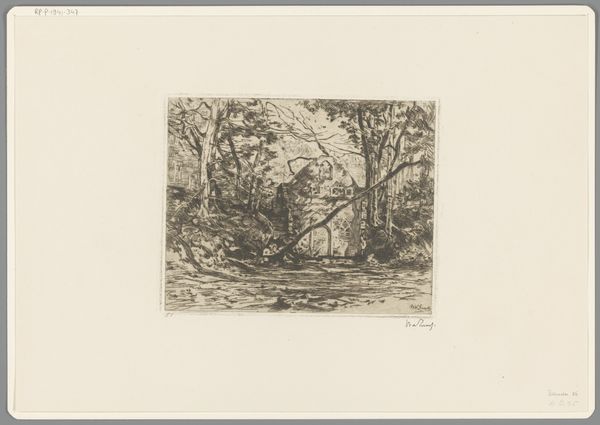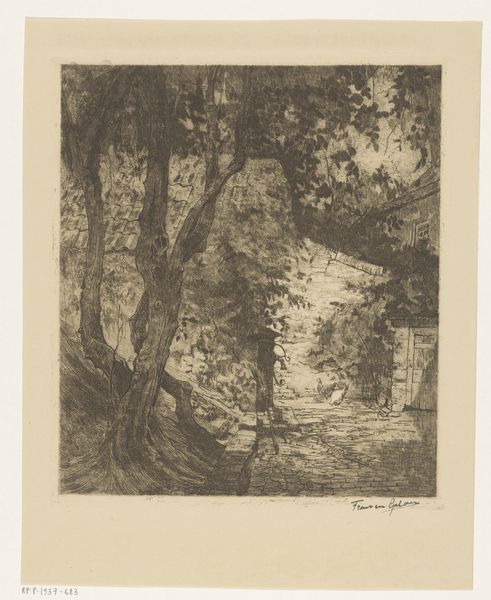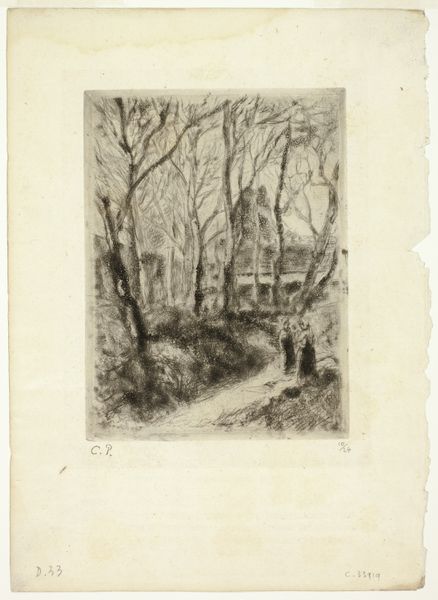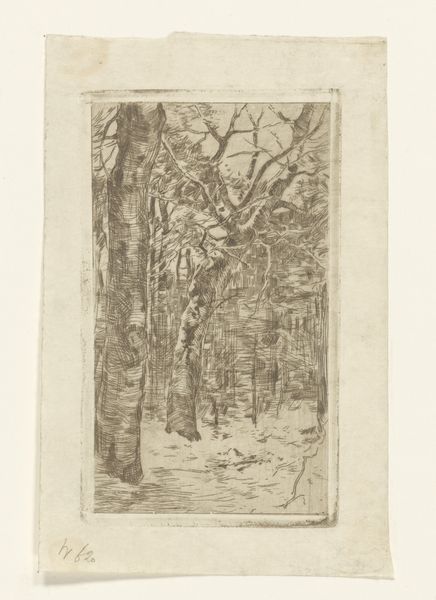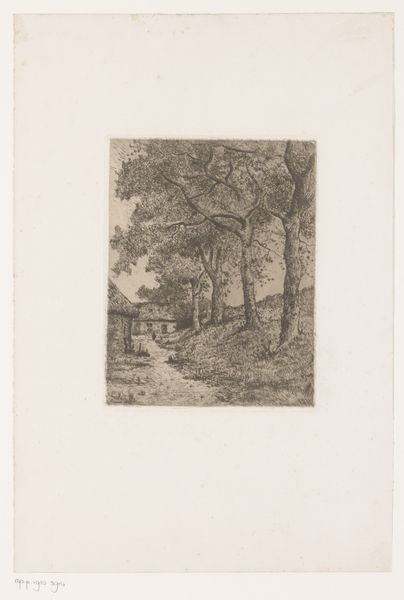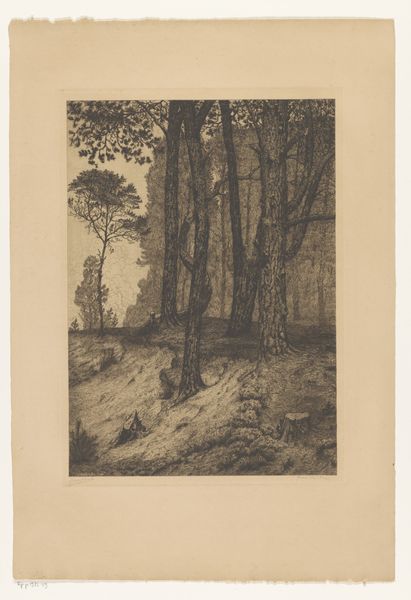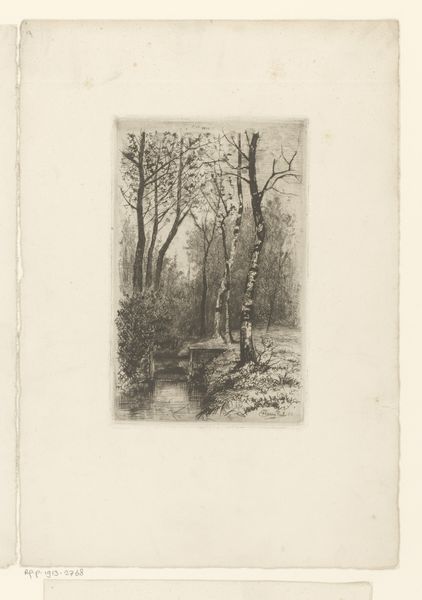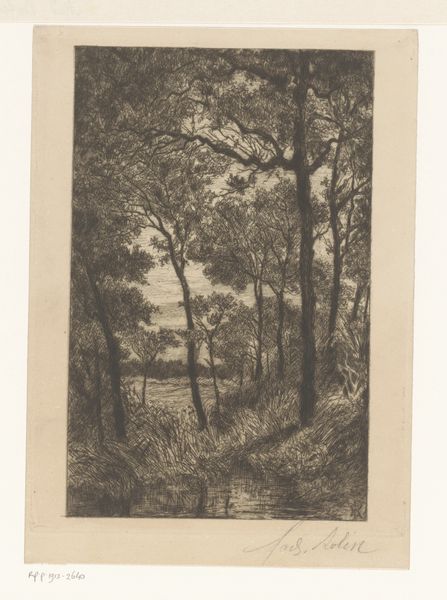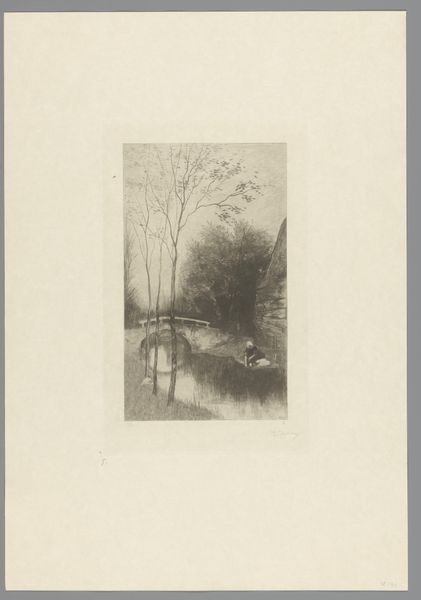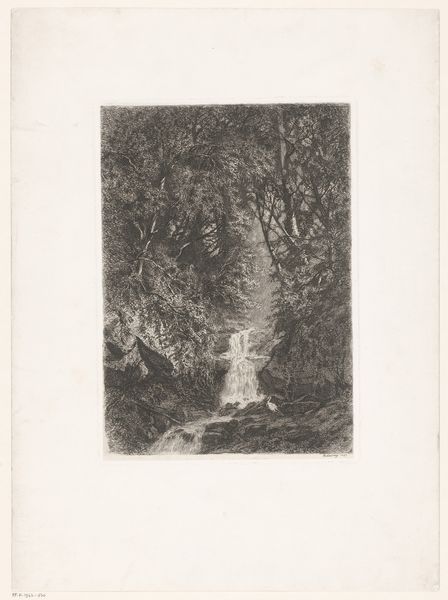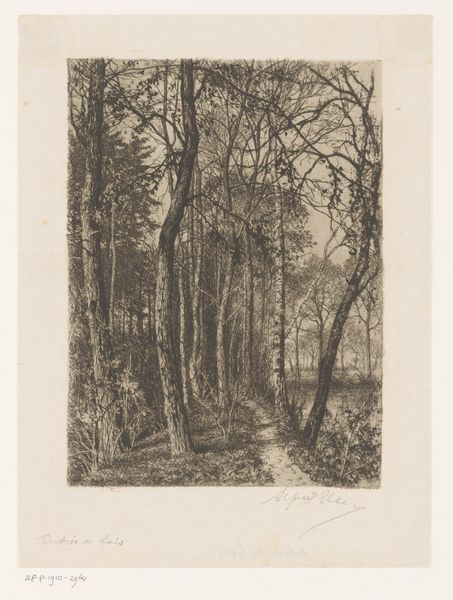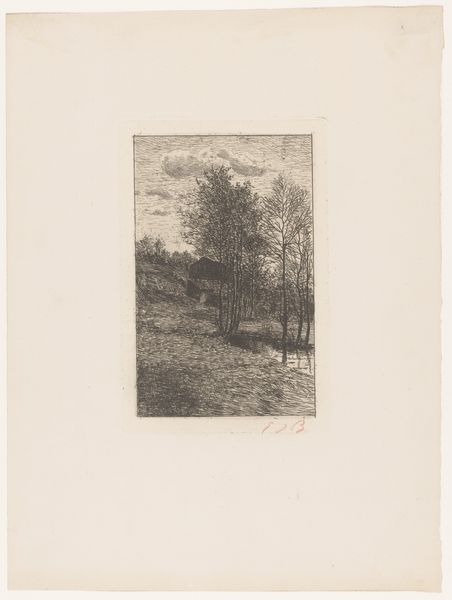
Dimensions: height 288 mm, width 197 mm
Copyright: Rijks Museum: Open Domain
Curator: This is Willem de Zwart's etching, "Ruïne in een bos aan een vijver," dating back to around 1896. Editor: Right off the bat, it feels haunted. I get a sense of melancholy. A stark, lonely little stage for something forgotten. Curator: Etchings like this gained popularity at the end of the 19th century due to the relative ease of producing them. Zwart and others used this medium to capture the atmospheric landscapes that resonated with Impressionism. It offered a unique interplay between the handmade mark and a kind of mass-production, which altered the understanding of art at the time. Editor: It reminds me of fairy tales – the kind that don't necessarily have happy endings. You know, you'd expect to find some mischievous forest spirit lurking there. Or, perhaps, a banished character seeking refuge... The strong contrast definitely amps up the mystery. Curator: Indeed. The heavy darks emphasize the isolation, but it’s softened by the textures achieved with the etching needle. Zwart seems to draw a relationship between civilization and nature, contrasting architecture with unkempt growth. One could imagine contemporary urbanites looking to such a scene to recuperate some sense of balance, despite the fact the image reads as “melancholy”, to your point. Editor: And it totally speaks to our romantic fascination with decay, doesn't it? We’re drawn to ruins. Makes us ponder impermanence, history... Our own fleeting moment in the grand scheme of things. Maybe Zwart tapped into something timeless in the human spirit. It does feel deeply personal, doesn't it? Like a secret whispered into the wind. Curator: Absolutely. And I find it quite telling how it ties into art's function in representing societal trends. These nostalgic landscapes came at a time of great societal and technological transformation, mirroring people’s yearning for slower and simpler lives. Editor: Well, it’s definitely made me want to wander into the woods and brood a little! Curator: Then its art has succeeded!
Comments
No comments
Be the first to comment and join the conversation on the ultimate creative platform.
